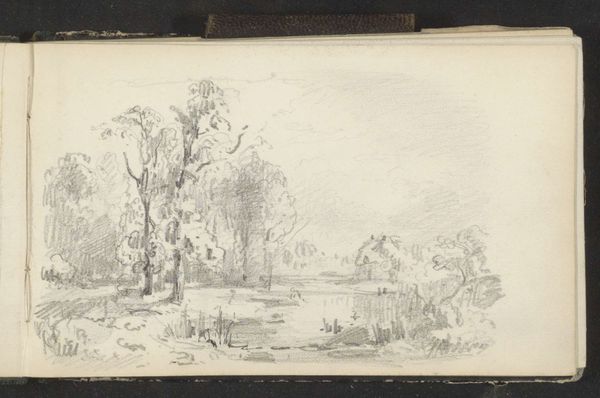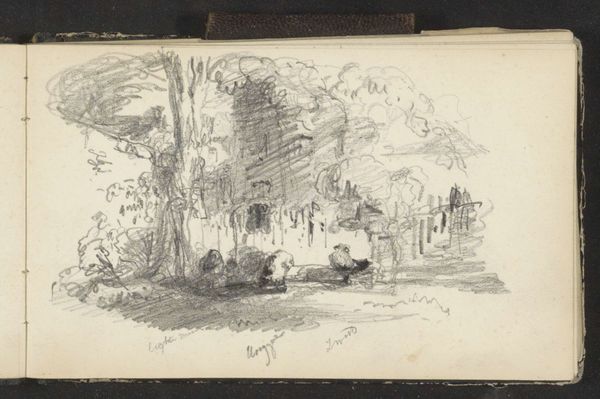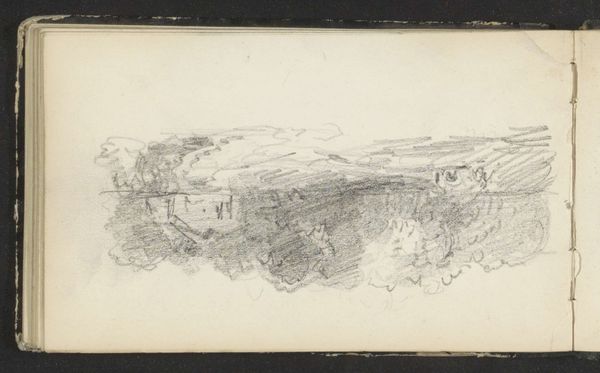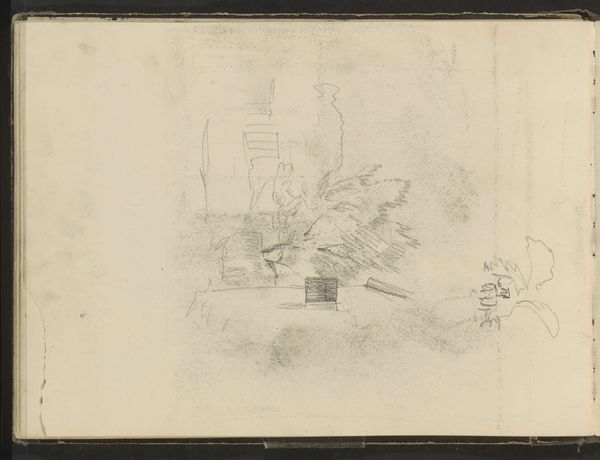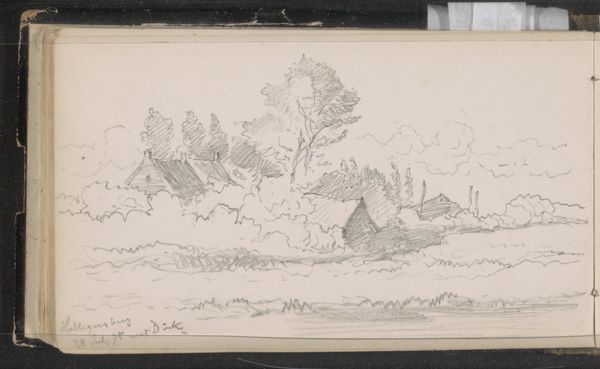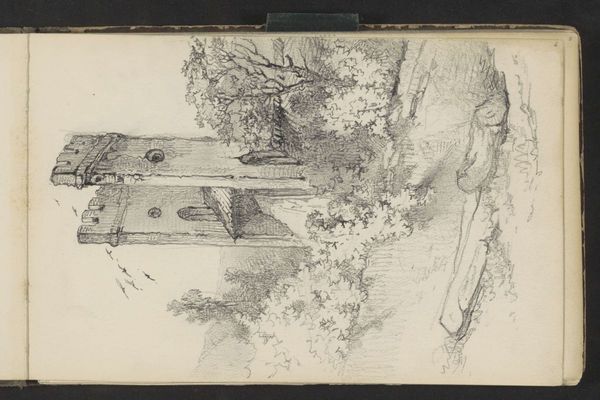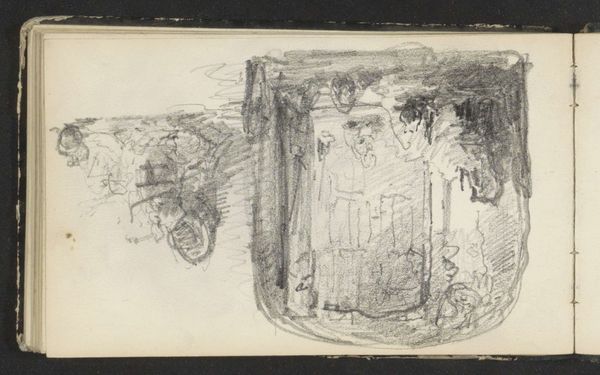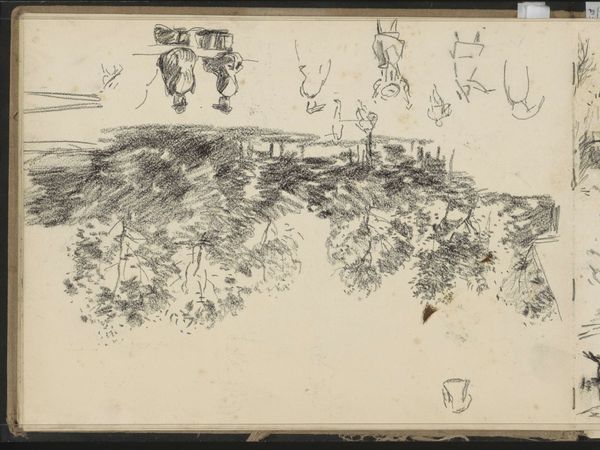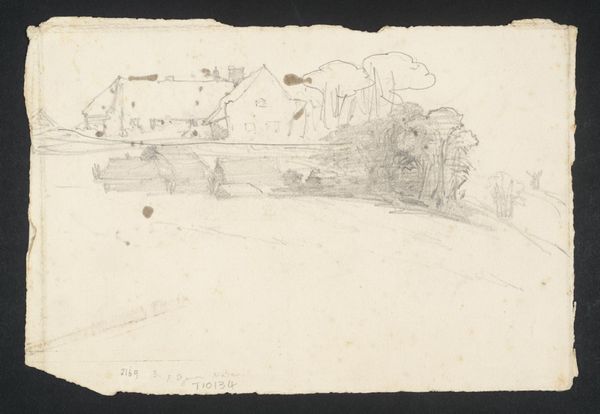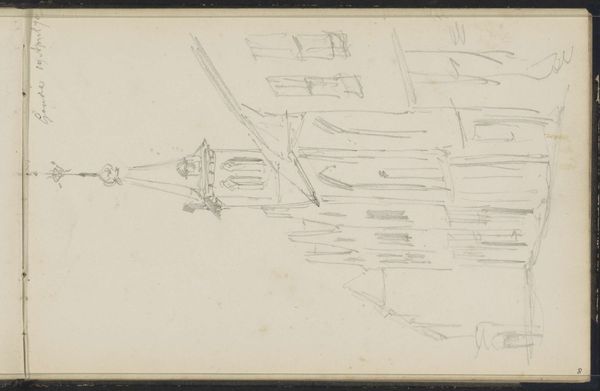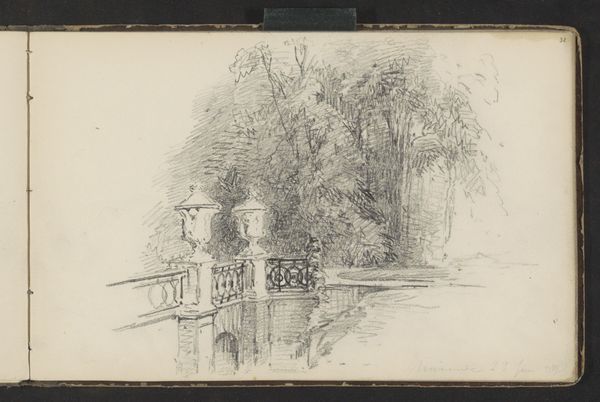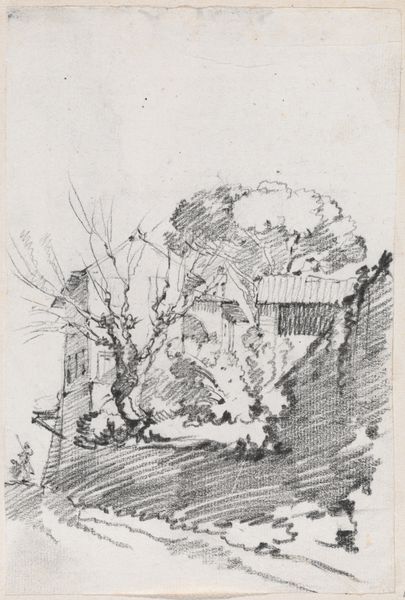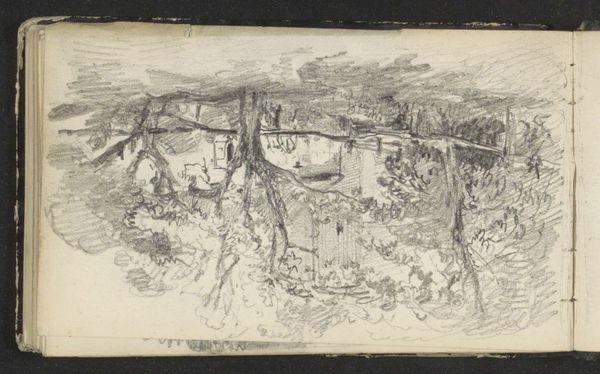
drawing, pencil
#
drawing
#
quirky sketch
#
pen sketch
#
sketch book
#
landscape
#
personal sketchbook
#
sketchwork
#
pen-ink sketch
#
pencil
#
pen work
#
sketchbook drawing
#
storyboard and sketchbook work
#
sketchbook art
#
realism
Copyright: Rijks Museum: Open Domain
Editor: Here we have Maria Vos’s “Huizen op het platteland,” or “Houses in the Countryside,” made sometime between 1834 and 1906. It appears to be a pencil and ink sketch, almost like a quick study in a sketchbook. The scene feels very serene and simple to me, capturing a quiet rural setting. What strikes you about this work? Curator: What immediately grabs my attention is the contrast between the loosely defined foreground and the relatively more detailed rendering of the buildings. Notice how the artist uses hatching and cross-hatching to define the forms, especially in the roof and the facade of the house. It establishes a clear structure and balance to the composition. Editor: I see that. The roofline definitely catches the eye because of the way the light and shadow are rendered. Why do you think Vos chose this particular technique? Curator: The contrast achieved through this method directs the viewer's focus towards the architectural elements and imbues them with a tangible presence. Consider the texture implied by the varying densities of the pencil strokes; how might that textural play contribute to the artwork's meaning? Editor: I guess it helps to distinguish between the man-made and the natural elements of the landscape. The softer pencil strokes in the background make those elements appear further away. Curator: Precisely! And it’s a study of spatial relationships achieved through tonal variation and line work alone. It almost reads like a map—or instructions to discover and appreciate the quiet beauty of our lived environment. Editor: That’s interesting! I was so focused on the sketchiness, I didn’t really notice the interplay between line and shadow. Thanks for helping me to look at it from that structural perspective! Curator: Indeed. I learned how keen you are in finding art’s meaning and purpose.
Comments
No comments
Be the first to comment and join the conversation on the ultimate creative platform.
